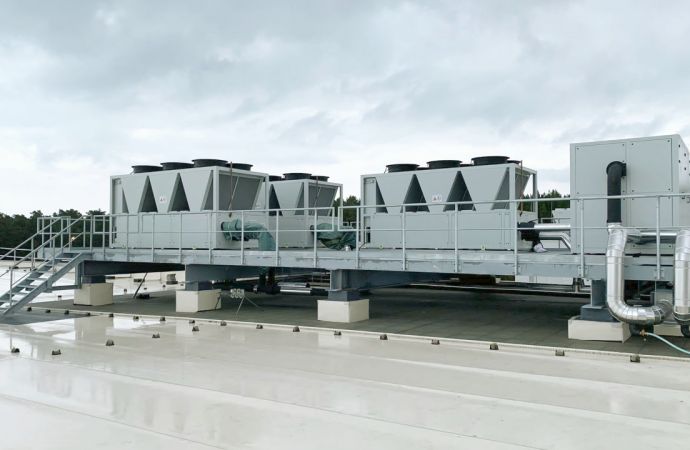Following concerns about trifluoroacetic acid (TFA) in drinking water, government-funded project will be completed next year.

Hohenschwangau Alps in Germany
The German Federal Government is funding a research project that will study HFOs (hydrofluoroolefins)and trifluoroacetic acid (TFA), the primary atmospheric degradation product of HFO-1234yf.
The study, which has a focus on the refrigeration/air conditioning sector, is called "Persistent degradation products of halogenated propellants and refrigerants in the environment: type, environmental concentrations and fate with special consideration of new halogenated substitutes with a low global warming potential."
Results are expected in 2020.
The German Environment Agency (Umweltbundesamt or UBA) has expressed concerns about the accumulation of TFA in drinking water, from which it can’t be easily removed.
HFOs represent the fourth generation of halogenated refrigerants. R1234yf, with a GWP of four, has become a popular substitute for R134a in mobile air conditioning (MAC) systems used in cars and trucks. The gas has also been marketed as an aerosol propellant, and can increasingly be found in supermarket refrigeration systems as part of an HFO/HFC blend.
When it escapes into the atmosphere, R1234yf lasts only up to two weeks before breaking down completely into TFA, a highly durable and mobile substance. TFA descends via rainfall as a form of “acid rain” to the earth; there it accumulates in various bodies of water, including rivers, streams, lakes and wetlands, as well as “terminal sinks” like salt lakes, playas and oceans.
The consensus of scientific studies is that, for the foreseeable future, the accumulation of TFA will be too small to pose a threat to the environment and humanity. But a major study conducted for the Norway Environment Agencyclosely considered theTFA question and identified numerous“knowledge gaps” that need to be filledbefore a definitive statement about TFA’senvironmental impact can be made.
Germany, has cast a wary eye on R1234yf. From an environmental point of view, “the refrigerant R1234yf is not an overall satisfying solution,” said the UBA.
According to the UBA, “R1234yf and other new short-lived refrigerants like R1233zd(E) and R1234ze are found more often and in increasing concentrations in the ambient air.” Moreover, said the UBA, “It was calculated for the EU that about 18,600 tons of TFA will be emitted into the environment per year when the passenger cars alone are fully equipped with R1234yf, not to mention the TFA arising from new refrigerant blends.”
Precautionary approach
The German Federal Government, in a reply to a written question from the parliament, noted that “the treatment techniques commonly used in waterworks, such as ozonation and activated carbon adsorption, are not capable of effectively removing TFA.
“In the light of precautionary environmental protection, the Federal Government therefore considers it to be expedient to reduce the input of persistent substances into the environment, such as TFA and its precursor compounds, as far as possible at source.”
The German Federal Government also told the parliament that TFA, originating from “man-made sources” exists “in some cases up to concentrations in the microgram per [liter] range” in spring and surface water, lakes, rivers, and in ground and drinking water. Consequently the UBA set the Health-Related Indicator Value (HRIV) – or in German, Gesundheitlicher Orientierungswert(GOW) – for TFA in drinking water at 3 micrograms (μg)/l.
If the concentration of a substance is above the HRIV, “measures have to be taken to improve the human toxicological evaluation,” said the UBA. "In parallel, the responsible authorities explore possibilities of minimizing or preventing the contamination of raw water."
While a German ordinance sets drinking-water quality, the federal states are responsible for checking and securing water quality. The German federal state North Rhine-Westphalia (NRW) has set its own goal of staying below the HRIV of 3 μg/lin surface waters that are used for producing drinking water.
NRW found the GOW exceeded at one water supply plant, and mixed its water with that of a non-polluted plant to get below the GOW. (See https://bit.ly/2z6zGfz.)
Responding to German concerns about TFA in drinking water, the European Fluorocarbons Technical Committee (EFCTC), said in a statement that R1234yf is currently an “insignificant contributor” to the amounts of TFA found, and that the projected growth in use of R1234yf and resulting emissions of TFA are “expected to have only a small contribution to the quantities of TFA found in German rivers.”
This article was excerpted from the cover story, “HFOs: How much is too much?” in the September issue of Accelerate Magazine.
The refrigerant R1234yf is not an overall satisfying solution.”
– The German Environment Agency (Umweltbundesamt or UBA)
Related stories



